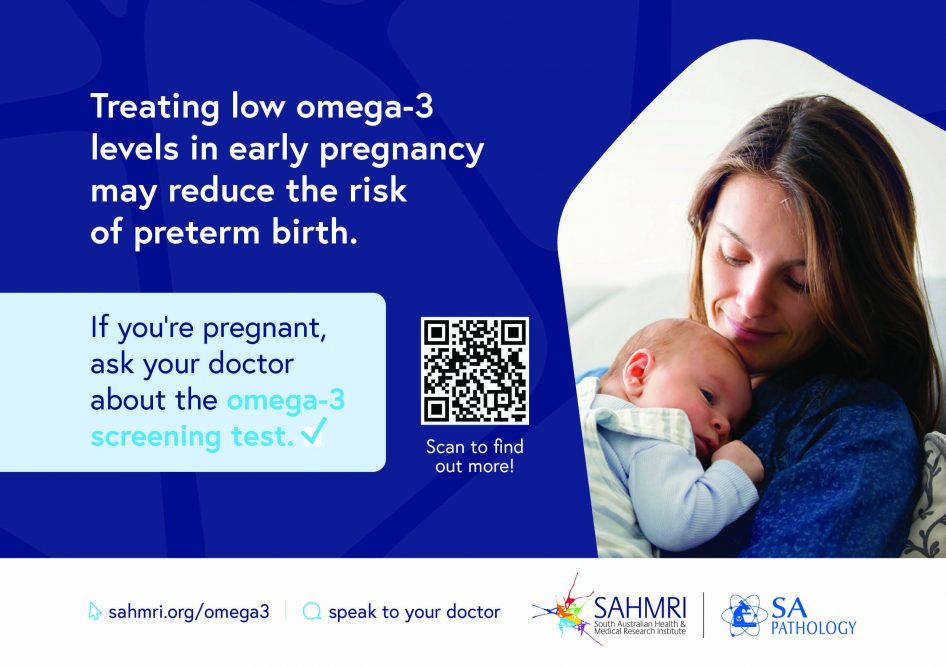More than 100 local women with single pregnancies are now engaging with the program each week, but SAHMRI Women and Kids Theme Leader, Professor Maria Makrides says that number must be doubled to realise optimal results.
“Our studies have shown that having an optimal omega-3 status in pregnancy will increase the chances of having a full-term pregnancy and therefore reduce the risk of prematurity,” Prof Makrides said.
“Omega-3 testing is now available to pregnant women in SA at the time of other antenatal screening tests. Those with low or depleted levels are advised to take the appropriate supplements to reduce their risk of having a preterm baby.”
In Australia approximately one in 12 babies is born prematurely. Babies born too soon, especially those born before 34 weeks of gestation, are more likely to have lengthy hospital stays and may have longer term health and developmental problems.
Omega-3 levels in the body are believed to play a role in determining timing of labour and birth. Prof Makrides said:
Our trials have shown that correcting the omega-3 status of women with low omega-3 levels reduces prematurity risk.
“We’re evaluating our omega-3 test-and-treat program as part of standard pregnancy care to see if we can emulate the results of clinical trials in the community. If we do, we’ll expect to see a reduction of about 14% in babies born before 34 weeks of gestation.”
Soon-to-be mother, Rachael Protzman recently opted-in for the omega-3 screening following a discussion with her doctor.
“It wasn’t something I really had to think much about,” she said.
“My GP explained it was an additional test that was included with the SAMSAS blood tests and I didn’t need to have any extra blood taken.
“I figured if this was something I could check without getting jabbed again, that could lead to a better outcome for my baby, why wouldn’t I do it?”
It’s not the case that all pregnant women should take omega-3 supplements, as studies have shown that higher dose supplementation for women who already have sufficient omega-3 levels may increase their risk of prematurity.
Many who opt-in for the test are found to have optimal levels and aren’t required to take any further action.
“I got my results during a telehealth appointment and was in the normal range. They just told me to keep doing what I was doing and that I didn’t need any further tests,” Mrs Protzman said.
“I was just reassured and had better peace of mind that I was already doing what I could to protect my baby.”
Leaders of the program, led by SAHMRI and SA Pathology, are encouraging women to opt-in by ticking the box on their standard pregnancy care form and say 80% must take part if the program is to achieve the best possible reduction in prematurity rates.
For more information:
Follow KIDDO on Instagram and Facebook, and subscribe to our weekly newsletter






